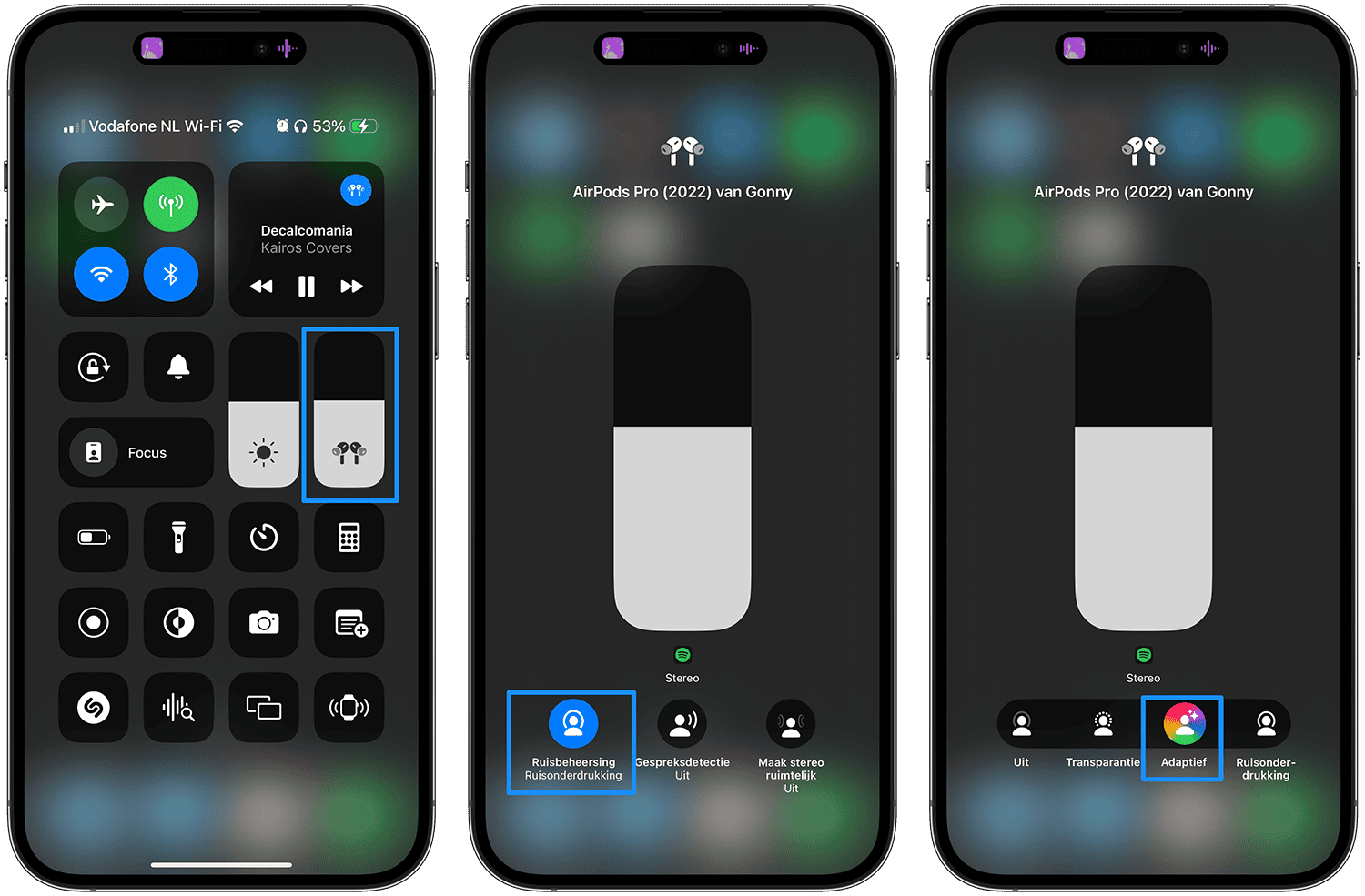What is adaptive audio?
Adaptive audio on the AirPods Pro alternates between active noise cancellation and transparency mode. The idea is that you can hear external sounds that are important, but that unwanted sound is blocked. You can hear it when someone speaks to you, but you cannot hear the sound of aircraft engines, leaf blowers and air conditioners. It can also come in handy during loud concerts to protect your hearing. The music still comes through well, but you are protected against loud noises. This is what you need to know about adaptive audio!
- You need this for adaptive audio
- Enable AirPods adaptive audio
- Setting stem impressions
Adaptive audio: you need this
To use this function you need the following:
- iPhone XS or newer
- iOS 17 or newer
- AirPods Pro 2022 or newer
Enable AirPods Pro adaptive audio
This is how you can activate adaptive audio on the AirPods Pro:
- Put the AirPods in your ears and start the music.
- Open Control Center on iPhone.
- Place your finger on the volume button for AirPods.
- Tap the button for Noise Control.
- You will now see four options: Off, Transparency, Adaptive and Noise Reduction.
- Choose Adaptive.
- A confirmation sound will sound and the button will turn rainbow colors.
Your AirPods will now automatically switch between noise cancellation and transparency mode.

You can also adjust the settings of the AirPods via the Settings:
- Make sure you have the AirPods in your ears.
- Open the Settings app and you’ll see the AirPods on the first screen. Tap it.
- You will now see the options for Noise Control.
- Choose Adaptive.
Setting stem impressions
You can also indicate what effect pressing the stems has. You arrange this separately for left and right.
- In the screenshots above you see the options Left and Right.
- Tap it and choose: Off, Transparency, Adaptive or Noise Reduction.
By default, you can switch between adaptive audio and noise cancellation. On previous AirPods models you always switch between transparency mode and noise reduction (the adaptive mode is of course not present).
Chances are you won’t have to switch at all, because the adaptive audio automatically adjusts your listening experience. There are even more useful AirPods features in iOS 17. They are all listed below!
Adaptive audio is aimed at automatically suppressing loud or disturbing sounds in your environment, such as the sound of a leaf blower or a flying plane. Other sounds, such as a bicycle bell or car horn, are still audible. You can also have conversations with others. Apple may have considered using GPS to control adaptive audio on the AirPods Pro, according to an interview with Apple’s Ron Huang. You would then always have noise cancellation in noisy environments. But this turned out to be practically impossible. It is not always quiet at home and it is not always noisy on the street. Instead of looking at location, Apple has chosen to ensure that the ambient noise is monitored in real time, so that the AirPods can intelligently make the decision to switch.
If you want to know more about noise control on the AirPods (also on other models), read these tips:
- How to use noise cancellation on AirPods and Beats: this is how it works
- Transparency mode on AirPods and Beats: this is how it works
- AirPods Pro problems: this is what you can do about crackling noise, noise and more
Prices AirPods Pro 2023 with USB-C and MagSafe
Of course, you don’t always need the very latest. The version with a Lightning box is also suitable for many people, although there is not always much savings to be made.
Prices AirPods Pro 2022 with Lightning and MagSafe













